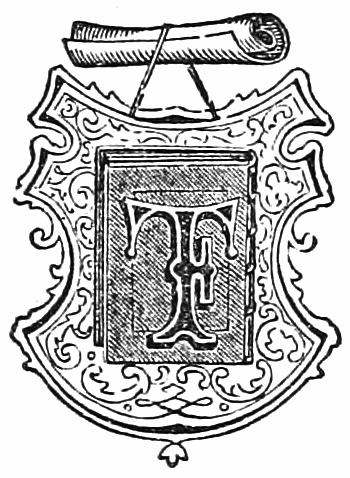|
Animal Notes
''Animal Notes'' is the second album by American rock band Crack the Sky, released in 1976 (see 1976 in music). Track listing Personnel The band *John Palumbo — Lead vocals, keyboards, acoustic guitar, harmonies *Rick Witkowski – Electric guitar, harmonies *Joe Macre – Bass guitar, harmonies *Jim Griffiths – Electric guitar, harmonies *Joey D'Amico – Drums, harmonies Additional musicians *David Sackson — Concert master *"Singin' Mounties" — Vocals ("Rangers at Midnight") *George Marge — Horns ("We Want Mine") *Robert "Chic" DiCiccio – Horns ("We Want Mine") *Gotham City Swing Band – Horns ("We Want Mine") Production *Terence P. Minogue – Producer *Marty Nelson – Producer *William Kirkland – Producer *Shelly Yakus – Engineer *Andy Abrams – Engineer *Don Puluse – Recorded orchestra Additional credits *Terence P. Minogue – Horn and string arrangements *Recorded at the Record Plant, New York City *Orchestra recorded at CBS Studios, New York Cit ... [...More Info...] [...Related Items...] OR: [Wikipedia] [Google] [Baidu] |
Crack The Sky
Crack the Sky is an American progressive rock band formed in Weirton, West Virginia, in the early 1970s. In 1975, ''Rolling Stone'' declared their first album the "debut album of the year", and in 1978, ''Rolling Stone Record Guide'' compared them to Steely Dan."Pie in the Sky" Joab Jackson, '''', July 12, 1995. Their first three albums charted on the ''Billboard'' 200. In 2015, their debut album was ranked number 47 in the Rolling Stone list of "50 Greatest Prog Rock Albums of All Time ". The band continues to release albums and perform to a small but devoted fan base to this day. History ...
|
Progressive Rock
Progressive rock (shortened as prog rock or simply prog; sometimes conflated with art rock) is a broad genre of rock music that developed in the United Kingdom and United States through the mid- to late 1960s, peaking in the early 1970s. Initially termed "progressive pop", the style was an outgrowth of psychedelic bands who abandoned standard pop traditions in favour of instrumentation and compositional techniques more frequently associated with jazz, folk, or classical music. Additional elements contributed to its "progressive" label: lyrics were more poetic, technology was harnessed for new sounds, music approached the condition of " art", and the studio, rather than the stage, became the focus of musical activity, which often involved creating music for listening rather than dancing. Progressive rock is based on fusions of styles, approaches and genres, involving a continuous move between formalism and eclecticism. Due to its historical reception, the scope of progre ... [...More Info...] [...Related Items...] OR: [Wikipedia] [Google] [Baidu] |
Crack The Sky (Crack The Sky Album)
''Crack the Sky'' is the debut album by American rock band Crack the Sky, released on LP in 1975 (see 1975 in music) by Lifesong Records (catalog #LS-6000). Track listing Personnel The band *John Palumbo – Lead vocals, keyboards, guitar *Rick Witkowski – Lead guitar, percussion *Joe Macre – Bass guitar, Backing vocalist, back-up vocals *Jim Griffiths – Lead guitar, back-up vocals *Joey D'Amico – Drums, back-up vocals Additional musicians *Michael Brecker — Horn section, Horns ("She's a Dancer", "Mind Baby") *Randy Brecker — Horns ("She's a Dancer", "Mind Baby") *David Sanborn — Horns ("She's a Dancer", "Mind Baby") *George Marge — Woodwind instrument, Woodwinds ("Robots for Ronnie", "Sleep", "Sea Epic") *Tom Jones — Trombone ("Sleep") Production *Terence P. Minogue – Producer *Marty Nelson – Producer *William Kirkland – Producer *Donald Puluse – Recording and mixing engineer *Terry Cashman — Executive producer *Tommy West – Executive producer *S ... [...More Info...] [...Related Items...] OR: [Wikipedia] [Google] [Baidu] |
Allmusic
AllMusic (previously known as All-Music Guide and AMG) is an American online music database. It catalogs more than three million album entries and 30 million tracks, as well as information on musicians and bands. Initiated in 1991, the database was first made available on the Internet in 1994. AllMusic is owned by RhythmOne. History AllMusic was launched as All-Music Guide by Michael Erlewine, a "compulsive archivist, noted astrologer, Buddhist scholar and musician". He became interested in using computers for his astrological work in the mid-1970s and founded a software company, Matrix, in 1977. In the early 1990s, as CDs replaced LPs as the dominant format for recorded music, Erlewine purchased what he thought was a CD of early recordings by Little Richard. After buying it, he discovered it was a "flaccid latter-day rehash". Frustrated with the labeling, he researched using metadata to create a music guide. In 1990, in Big Rapids, Michigan, he founded ''All Music Guid ... [...More Info...] [...Related Items...] OR: [Wikipedia] [Google] [Baidu] |
Rock Albums Of The Seventies
''Christgau's Record Guide: Rock Albums of the Seventies'' is a music reference book by American music journalist and essayist Robert Christgau. It was first published in October 1981 by Ticknor & Fields. The book compiles approximately 3,000 of Christgau's capsule album reviews, most of which were originally written for his "Consumer Guide" column in ''The Village Voice'' throughout the 1970s. The entries feature annotated details about each record's release and cover a variety of genres related to rock music. Christgau's reviews are informed by an interest in the aesthetic and political dimensions of popular music, a belief that it could be consumed intelligently, and a desire to communicate his ideas to readers in an entertaining, provocative, and compact way. Many of the older reviews were rewritten for the guide to reflect his changed perspective and matured stylistic approach. He undertook an intense preparation process for the book during 1979 and 1980, which temporarily hi ... [...More Info...] [...Related Items...] OR: [Wikipedia] [Google] [Baidu] |
Ticknor & Fields
Ticknor and Fields was an American publishing company based in Boston, Massachusetts. Founded as a bookstore in 1832, the business would publish many 19th century American authors including Ralph Waldo Emerson, Nathaniel Hawthorne, Henry James, Henry Wadsworth Longfellow, Harriet Beecher Stowe, Henry David Thoreau, and Mark Twain. It also became an early publisher of '' The Atlantic Monthly'' and '' North American Review''. The firm was named after founder William Davis Ticknor and apprentice James T. Fields, although the names of additional business partners would come and go, notably that of James R. Osgood in the firm's later years. Financial problems led Osgood to merge the company with the publishing firm of Henry Oscar Houghton in 1878, forming a precursor to the modern publisher Houghton Mifflin Harcourt. Houghton Mifflin revived the Ticknor and Fields name as an imprint from 1979 to 1989. Company history Early years In 1832 William Davis Ticknor and John Al ... [...More Info...] [...Related Items...] OR: [Wikipedia] [Google] [Baidu] |
1976 In Music
A list of notable events in music that took place in the year 1976. __TOC__ Specific locations *1976 in British music *1976 in Norwegian music Specific genres *1976 in country music *1976 in heavy metal music *1976 in jazz Events January–February *January 5 – Former Beatles road manager Mal Evans is shot dead by Los Angeles police after refusing to drop what police only later determine is an air rifle. *January 6 – Peter Frampton releases his live album ''Frampton Comes Alive!'' * January 7 – Kenneth Moss, a former record company executive, is sentenced to 120 days in the Los Angeles County Jail and four years probation for involuntary manslaughter in the 1974 drug-induced death of Average White Band drummer Robbie McIntosh. *January 13 – A trial begins for seven Brunswick Records and Dakar Records employees. The record company employees are charged with stealing more than $184,000 in royalties from artists. *January 19 – Concert promoter Bill Sargent makes ... [...More Info...] [...Related Items...] OR: [Wikipedia] [Google] [Baidu] |
Backing Vocalist
A backing vocalist is a singer who provides vocal harmony with the lead vocalist or other backing vocalists. A backing vocalist may also sing alone as a lead-in to the main vocalist's entry or to sing a counter-melody. Backing vocalists are used in a broad range of popular music, traditional music, and world music styles. Solo artists may employ professional backing vocalists in studio recording sessions as well as during concerts. In many rock and metal bands (e.g., the power trio), the musicians doing backing vocals also play instruments, such as guitar, electric bass, drums or keyboards. In Latin or Afro-Cuban groups, backing singers may play percussion instruments or shakers while singing. In some pop and hip hop groups and in musical theater, they may be required to perform dance routines while singing through headset microphones. Styles of background vocals vary according to the type of song and genre of music. In pop and country songs, backing vocalists may ... [...More Info...] [...Related Items...] OR: [Wikipedia] [Google] [Baidu] |
Concertmaster
The concertmaster (from the German ''Konzertmeister''), first chair (U.S.) or leader (U.K.) is the principal first violin player in an orchestra (or clarinet in a concert band). After the conductor, the concertmaster is the second-most significant leader in an orchestra, symphonic band or other musical ensemble. Orchestra In an orchestra, the concertmaster is the leader of the first violin section. There is another violin section, the second violins, led by the principal second violin. Any violin solo in an orchestral work is played by the concertmaster (except in the case of a concerto, in which case a guest soloist usually plays). It is usually required that the concertmaster be the most skilled musician in the section, experienced at learning music quickly, counting rests accurately and leading the rest of the string section by their playing and bow gestures. The concertmaster sits to the conductor's left, closest to the audience, in what is called the "first chair," ... [...More Info...] [...Related Items...] OR: [Wikipedia] [Google] [Baidu] |
Horn Section
A horn section is a group of musicians playing horns. In an orchestra or concert band, it refers to the musicians who play the "French" horn, and in a British-style brass band it is the tenor horn players. In many popular music genres, the term is applied loosely to any group of woodwind or brass instruments, or a combination of woodwinds and brass. Symphonic In a symphony orchestra, the horn section is the group of symphonic musicians who play the French horn (or German horn or Vienna horn). These musicians are typically seated to the back of the ensemble and may be on either side at the director's discretion. Placing them to the left with their bells toward the audience increases the prominence of the section, whereas on the right, the sound reflects off the back of the stage. Most of the time, players are seated right to left from the director's view based on seating, with the principal horn (first horn) being seated on the right and fourth horn seated on the left. T ... [...More Info...] [...Related Items...] OR: [Wikipedia] [Google] [Baidu] |






